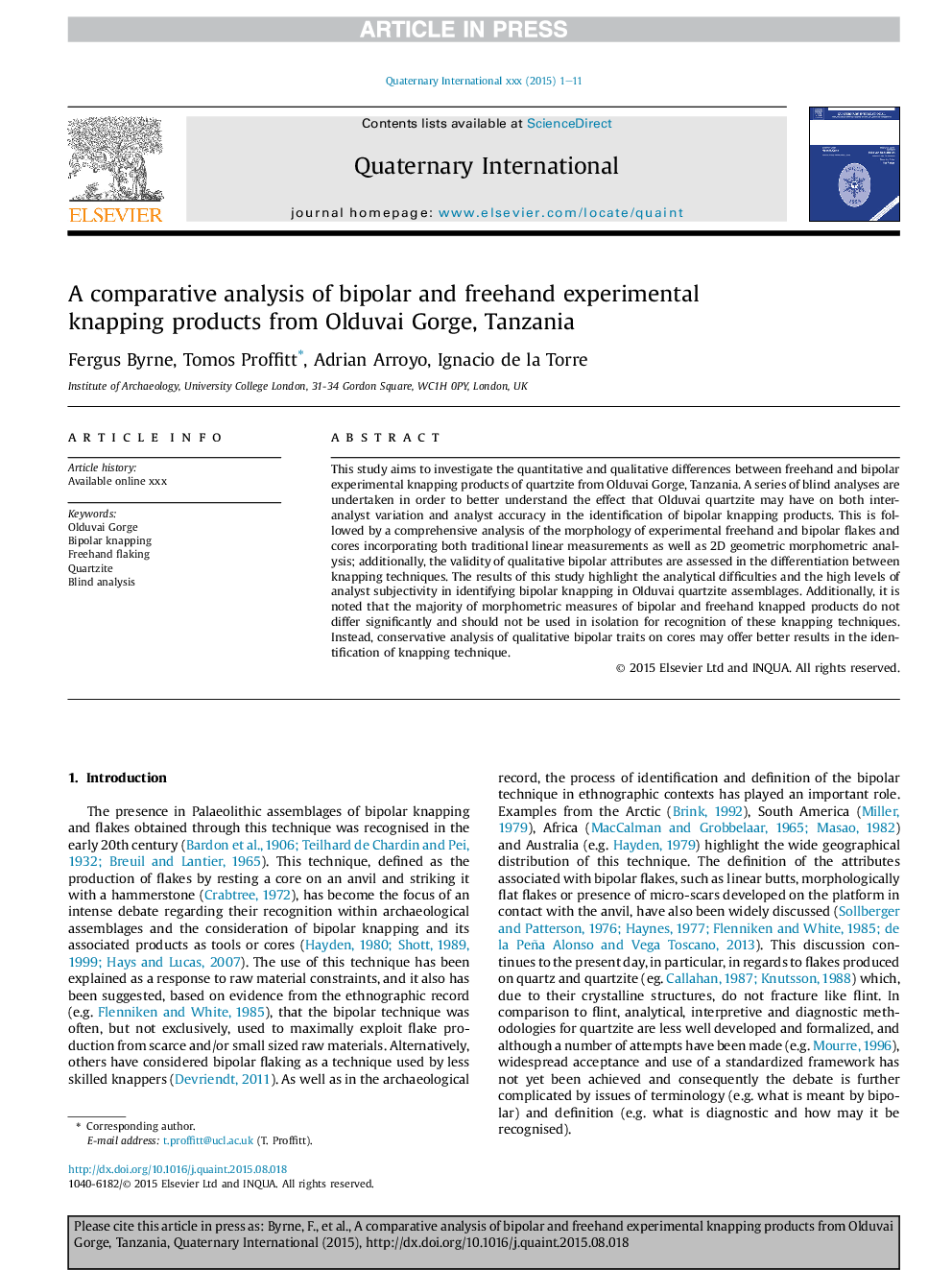| Article ID | Journal | Published Year | Pages | File Type |
|---|---|---|---|---|
| 5113490 | Quaternary International | 2016 | 11 Pages |
Abstract
This study aims to investigate the quantitative and qualitative differences between freehand and bipolar experimental knapping products of quartzite from Olduvai Gorge, Tanzania. A series of blind analyses are undertaken in order to better understand the effect that Olduvai quartzite may have on both inter-analyst variation and analyst accuracy in the identification of bipolar knapping products. This is followed by a comprehensive analysis of the morphology of experimental freehand and bipolar flakes and cores incorporating both traditional linear measurements as well as 2D geometric morphometric analysis; additionally, the validity of qualitative bipolar attributes are assessed in the differentiation between knapping techniques. The results of this study highlight the analytical difficulties and the high levels of analyst subjectivity in identifying bipolar knapping in Olduvai quartzite assemblages. Additionally, it is noted that the majority of morphometric measures of bipolar and freehand knapped products do not differ significantly and should not be used in isolation for recognition of these knapping techniques. Instead, conservative analysis of qualitative bipolar traits on cores may offer better results in the identification of knapping technique.
Keywords
Related Topics
Physical Sciences and Engineering
Earth and Planetary Sciences
Geology
Authors
Fergus Byrne, Tomos Proffitt, Adrian Arroyo, Ignacio de la Torre,
